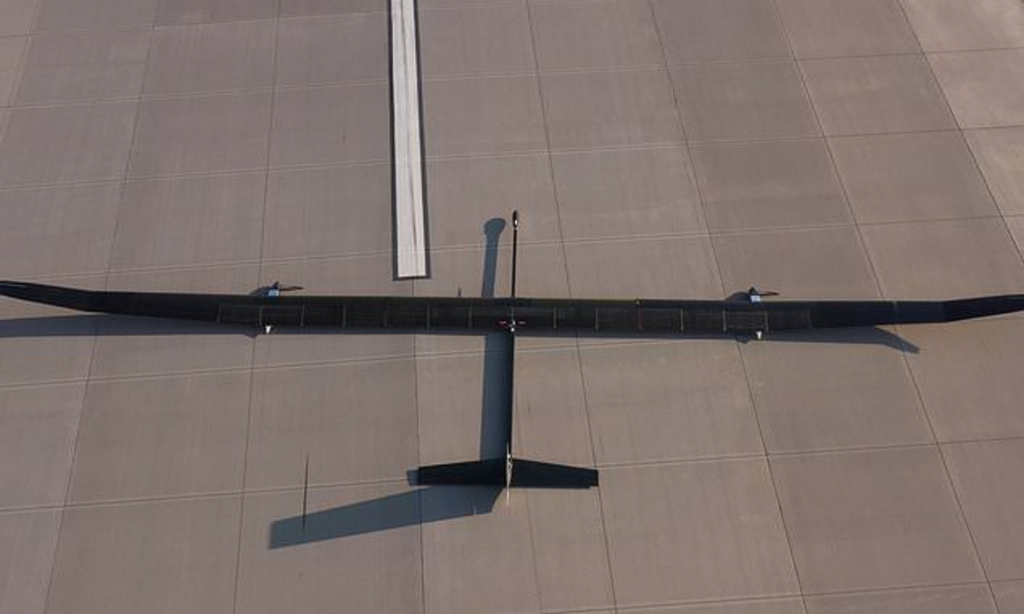A groundbreaking solar-powered drone developed by BAE Systems, a London-based company, has successfully completed its inaugural journey to the stratosphere, marking a significant milestone in aviation technology.
PHASA-35 relies on solar power during daylight hours and seamlessly transitions to battery power during the night, enabling it to sustain flight for an astonishing period of over a year in the stratosphere, which is lower than most satellites. With a payload capacity of up to 15kg, including cameras, sensors, and communication equipment, this pioneering drone possesses the capability to facilitate vital communication between troops and offer internet access in rural areas during emergencies or natural disasters.
Furthermore, PHASA-35 exhibits promising potential in revolutionizing communication networks, such as 4G and 5G, particularly in regions currently plagued by poor coverage. BAE Systems predicts that by the mid-decade, PHASA-35 will become an accessible and cost-effective alternative to traditional satellite technology, renowned for its cumbersome weight. In contrast, this solar-powered marvel weighs a mere 150kg, roughly equivalent to a panda bear, and represents a fraction of the mass typically associated with satellites.
Developed in collaboration with engineers from Hampshire-based Prismatic, PHASA-35 serves various purposes, including ultra-long endurance intelligence, surveillance, reconnaissance, and bolstering security measures. Following the successful launch, Dave Corfield, CEO of Prismatic, expressed his elation, stating, “The team have absolutely smashed this out of the park.” He further affirmed that PHASA-35’s inaugural stratospheric flight solidifies its standing as the future’s go-to system for extended-duration, high-altitude missions and communication applications.
The creation of PHASA-35 commenced in 2018, accompanied by the release of concept images, following the successful debut of a quarter-scale model named PHASE-8 in 2017. Subsequently, the full-sized PHASA-35 embarked on its maiden flight in February 2020, taking off from the Woomera Test Range in South Australia. The recent milestone of reaching the stratosphere, achieving an altitude close to its maximum capability of 70,000 feet, was accomplished on June 25 and announced by BAE Systems on Friday. This remarkable achievement transpired at the White Sands Missile Range in New Mexico, a renowned military testing area and firing range utilized by the United States Army.
BAE Systems plans to conduct a series of trials to validate the drone’s performance before it can be made commercially available. Engineers envision a wide range of applications for PHASA-35, particularly in areas traditionally serviced by low Earth orbit satellites, including environmental surveillance, disaster relief, border protection, maritime and military reconnaissance, as well as mobile internet communications. For instance, the drone’s sensors can be employed to monitor moisture levels in vulnerable forests, providing advanced warnings of potential fire outbreaks weeks in advance.
Prismatic asserts that PHASA-35 offers services at a significantly lower cost compared to conventional satellites and possesses the flexibility to be deployed virtually anywhere, much like a commercial drone. While the drone’s launch is contingent on favorable wind and air conditions, its remarkable endurance of over a year in flight allows for the simultaneous launch of multiple drones, ensuring readiness whenever the need arises. Operating in the stratosphere grants PHASA-35 unparalleled stability, free from weather-related hindrances such as wind and rain, enabling prolonged and consistent observations of specific areas.
With PHASA-35’s potential to revolutionize communication networks, enhance surveillance capabilities, and facilitate critical services in remote locations, this solar-powered drone heralds a new era in aerospace technology.

